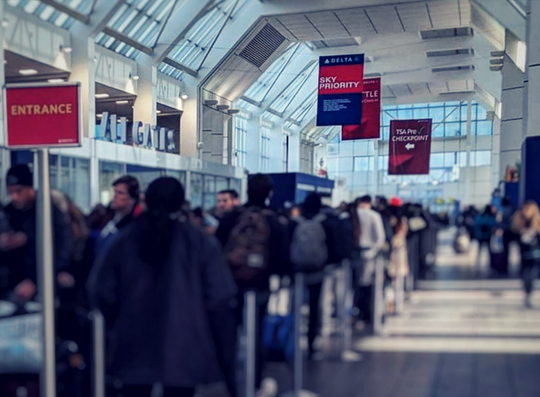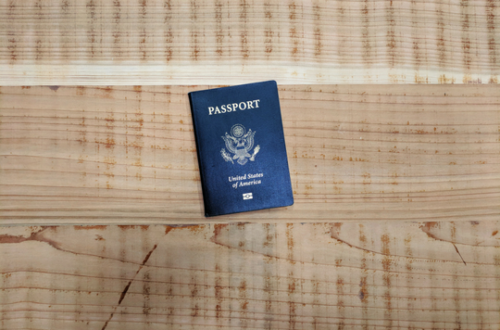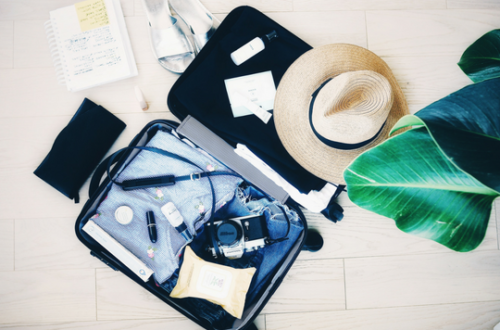
Trusted Traveler Programs: A Guide to CLEAR, TSA PreCheck, and Global Entry
At the time of this update (10/25/23) unprecedented demand for government run Trusted Traveler Programs has increased wait times.
Why should you consider Trusted Traveler Programs?
Picture it, JFK Airport 2018. An exhausted sick woman debarks an 8 hour flight, and walks up to the customs area with her travel partner. He looks at her, and says “You don’t have Global Entry? I’ll see you at baggage claim.” Yes, I am that woman, and yes, my friend did leave me by myself to puzzle my way through re-entry. Don’t judge him, he’s a sweet man. In that moment I resolved that I’d never be in that position again.
During my trip to Spain I went through 5 airports, and I don’t know how many security lines. I got sick of waiting, removing my shoes, and otherwise being a part of the miserable sea of humanity that is airport security and customs. I got back to Nashville, and started researching my options. During my travels, I’d seen signs for CLEAR. I knew what TSA PreCheck was, and had learned the magic of Global Entry. What these have in common is that they’re all forms of Trusted Traveler Programs. These programs allow you to be pre-screened and approved as a low security risk before you travel. This helps speed up your security screenings. They differ in many ways, and I’ve done the research so you don’t have to. Below you will learn about each of these Trusted Traveler Programs and which is best for you.
CLEAR
CLEAR is a privately held third-party service. It’s available at an expanding number of airports. The cost is $189/year for individuals, or you can purchase a family plan for $189/year + $70 per family member. If you belong to any of the following you can sign up for CLEAR at a discounted rate:
CLEAR works in conjunction with TSA PreCheck/ Global Entry, but doesn’t offer much value if you don’t frequent airports where it’s available. Members use dedicated lanes where they perform biometric scans (fingerprint and iris) in place of manual ID verification. They then scan their boarding pass and go to their appropriate security line (Standard or PreCheck).
Who is CLEAR for?
People with nominal patience, and extra coins who frequent the locations that the company serves. Those who qualify for a discount as they will spend less for the privilege of flying past the rest of us.
TSA PreCheck
PreCheck is a program operated by the U.S. government. It’s available at over 200+ airports and 90+ airlines. With a cost of $70-85* for a 5 year membership ($14-17/year), it’s a good value if you travel through any of the airports on any of the airlines. Even if you only fly a couple of times a year, it’s worth it. Why is it worth it? Having PreCheck gives you use of dedicated lanes which allow for expedited security checks. You don’t have to remove your shoes, laptop, 3:1:1 liquids, belt, or light jacket. You do this by including your Known Traveler Number when booking your flight. Keep in mind that because the TSA is well the TSA, they don’t guarantee expedited screening to anyone at any time. You could still be asked to perform standard screening procedures, due to random checks.
*Price varies based on enrollment location
Who is TSA PreCheck for?
People with reasonable amounts of patience, who see the value in avoiding what most see as the annoying parts of dealing with TSA. This is best for those who are strictly into domestic travel for reasons you’ll see in the next section.
Global Entry
Finally, Global Entry: Global Entry is another U.S. government run program. It’s not available at as many airports as PreCheck, but it covers most major airports used for international travel. This program costs $100 for 5 years ($20/year), but the price increase nets you both Global Entry and PreCheck membership. If you travel internationally, even once a year, this is where you want to put your money. When re-entering the country at a serviced airport, you’ll skip the lines and paperwork and go straight to a Global Entry kiosk. You’ll scan your passport and your fingerprint, and complete a customs declaration form. It’ll then spit out a receipt and direct you to your escape. Again this is the U.S. government (CBP this time), and you may still need to speak to a CBP officer in certain circumstances. If your receipt has an X (issue of some sort/random inspection), you’ll need to go straight to a CBP officer. If there’s an O (you declared something) you can go straight to the exit, but you’ll have to talk to the officer there.
Who is Global Entry for?
If you’re reading this, probably you. Seriously, Global Entry is the best Trusted Traveler Program for international travelers. You also get PreCheck so you’re covered for domestic travel as well. Now the catch, Global Entry provides 0 privilege at airports that don’t have Global Entry kiosks. If you NEVER use any Global Entry serviced airports, you may want to stick to TSA PreCheck.
Now that you know the differences, and have figured out which program is going to work for you, you have to apply. Like applying for your passport, you want to start at the appropriate website. For TSA PRE✓ and Global Entry, these should be “.gov” sites (anything else isn’t legit, don’t do it).
- To apply for TSA PreCheck head over to https://www.tsa.gov/precheck to get started. Fill out an application, and schedule an appointment at your local enrollment center. Available appointments at Enrollment centers can fill up fast. You may have to wait several weeks for an appointment, but some will also take walk-ins. Your appointment will include a background check and fingerprinting. It’s also where you’ll pay your fee so don’t forget it. Many credit cards/loyalty programs offer discounts or full reimbursement for this cost. After you apply, it can take some time to receive written notice of your status. Your approval can happen within a few days of your appointment so check your application status online. Once approved, you’ll receive your Known Traveler Number (KTN). This is what you use to access PreCheck lanes at the airport. There is no physical card or credential so always include your KTN when booking flights.
- For Global Entry go to the CBP website. You’ll see how to create a Trusted Traveler Program (TTP) account. Once you create your account, you’ll complete the application for Global Entry, and pay the $100 fee.
- Note: Many of the cards that cover the PreCheck fee will cover this as well.
Once you submit your application and fee, CBP will review your application. If you receive conditional approval, your TTP account will tell you how to schedule an interview at a Enrollment Center. Take your passport and another form of ID (driver’s license or state issued ID card) to your interview. During the interview, a CBP officer will:
- Ask you questions
- Take your photo
- Collect biometric information (fingerprints)
After your interview, you may receive approval within 1-2 days. It can take longer if they need more information. Once you’re approved, you’ll receive your card within 1-8 weeks. You don’t need the card for re-entry via airports, but it does contain your KTN. You can also get your KTN from CBP support if you don’t have your card.
- Going CLEAR? Head to https://www.clearme.com. Once there, hit the green “Get Clear” button on the upper right side of the page. Now complete your information, select your plan, and provide your payment details. You’ll also need to agree to the T&C before you submit. Once you do this you can head to one of their enrollment centers, and complete the process. You can also do the entire process at the enrollment center and skip the online process. to complete your process.
There you have it, Trusted Traveler Programs in a nutshell. Please keep in mind that this is a brief overview of each program. Make sure that you meet the requirements for your program of choice before applying. All application fees for government operated programs are non-refundable regardless of approval status.
I initially completed the Global Entry application process in June 2018. You can read more in my post about the experience.




